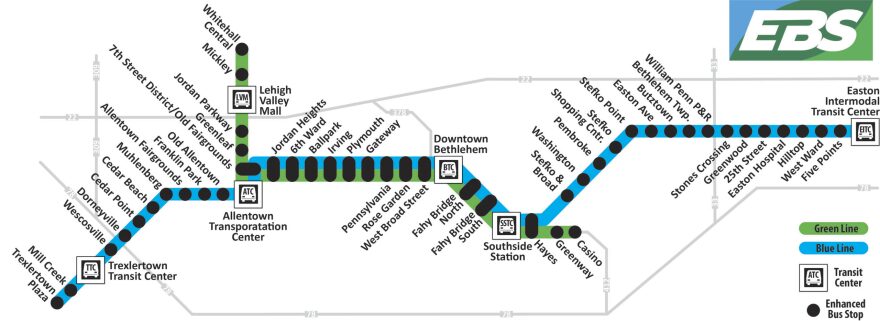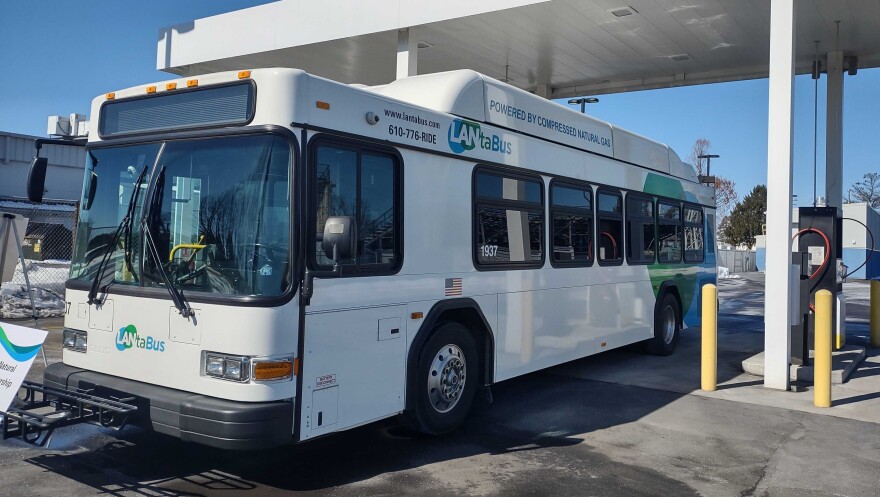LehighValleyNews.com asked readers for input for The Road Ahead, our latest project examining local traffic and road safety. They rose to the challenge, sharing their takes on road design, traffic patterns, driving trends, public transit and more. Each week, The Road Scholar will review some of the concerns driving Lehigh Valley motorists. Comments from readers have been edited for grammar, space and clarity.
We’re not going to get all the trucks off the road anytime soon in our area. A train that runs from Trexlertown to Easton would be awesome, but we’ll probably all be dead before that happens. The bigger cities have public transportation. Until we figure that out, we’ll continue to spin our wheels — literally!
The few times I’ve looked at taking LANTA ("Hey, let's take the bus from Trexlertown to Bethlehem for Musikfest!"), time-wise and schedule-wise, it’s just not conducive to use. Maybe there’s something I’m missing with LANTA? — Kim H., Breinigsville
Kim's take is a fair one, and is a common refrain I hear from readers. Folks have been clamoring for a more robust public transit system in the Lehigh Valley for ages, pointing to the New York Metro system as the ideal.
LANTA, however, serves 4.1 million riders a year. New York City's Metro system serves 3.6 million riders a day. The scales at play here simply don't come close.
In the past few years, LANTA has tried to amp up its services by offering its first enhanced bus service (or EBS) lines. The EBS routes see more frequent service; a bus shows up at these stops every 30 minutes instead of every hour. The Blue Route runs between the Shops at Trexlertown off Hamilton Boulevard to the Easton Intermodal Transportation Center. The Green Route runs between the Walmart in Whitehall Township and Wind Creek Bethlehem.
Enhanced bus service lines
Owen O'Neil, LANTA's executive director, said in an interview Monday that the EBS routes are doing well. Ridership across the system has returned to its pre-COVID levels even though many employers don't require their employees to come to the workplace five days a week. The Blue and Green lines are the most popular routes, he said.
But even those lines don't match the convenience people like Kim may be seeking. Heading from Trexlertown to the Lehigh Valley Mall on LANTA would take between 45 minutes to 55 minutes; heading back would take an hour. By comparison, Kim could drive directly from the Shops at Trexlertown to the mall in about 20 minutes, per Google Maps.

O'Neil said there's room to improve times on the margins. The next phase of infrastructure improvements would call for adding smart signals (traffic lights that may hold a green light a few seconds to let a bus through) and queue jumps (special lanes that would give buses priority at lights) to the EBS routes. That's three to five years away, depending on funding availability, he said.
"You add all these things up, it shaves 20 seconds here or there. By the time you get from Easton to Trexlertown, you shave 15, 20 minutes off the trip just by having these improvements," he said.
But a train? That's not in the cards anytime soon.
"A rule of thumb, at least a couple of years ago, is that light rail is $100 million a mile. That assumes no tunnels, no bridges. It's not a cheap prospect," O'Neil said. "And that [rate] may be higher now."
Justifying rail
To justify receiving that type of funding from the federal government and state, LANTA would need to start filling its existing buses, he said. Then it would need to start filling buses that run every 15 minutes instead of every 30 minutes. Once LANTA can fill capacity on buses running every 5 minutes, LANTA could seek funding to upgrade to articulated buses, he said. If those larger buses fill up, only then would light rail be on the table.
That type of shift would take decades to implement and over $1 billion in capital improvements. Even if the money somehow materialized, Kim is right — no one reading this would be alive to enjoy it.
But how's that long-shot growth in ridership supposed to happen when so many Lehigh Valley residents aren't enticed by the current offerings?
While the EBS routes are full during the morning rush hour, there are seats to fill later in the day, O'Neil said. And if the average Lehigh Valley resident can cut their travel time in half by driving themselves, as that roundtrip between Trexlertown and the Lehigh Valley Mall showed, increasing demand looks like a hard sell.
Unless the state increases public transportation funding, LANTA will run a deficit next year.
As it is, public transit in Pennsylvania is struggling.
Gov. Josh Shapiro had to shift $153 million away from interstate improvement projects in December to bail out SEPTA. LANTA isn't much better off, O'Neil said. Unless the state increases public transportation funding, LANTA will run a deficit next year, he said.
Shapiro has proposed a $292.5 million increase in transit funding in his 2025-26 budget. Time will tell if state lawmakers are willing to raise that level of capital for a service most Pennsylvanians aren't using.
In theory, the Lehigh Valley could increase its local funding of public transportation. Shapiro has suggested that Philadelphia's collar counties increase their contribution to SEPTA to protect its services. But there's been little political interest in Lehigh and Northampton counties to boost LANTA's funding.
For everyday travel, that likely means LANTA will focus on serving the 8.1% of occupied Lehigh County households with no vehicles — Allentown's rate is 16.7% — and the 6.9% in Northampton County. Special occasions may be a different matter, though. Kim wasn't thrilled with service for Musikfest, but your mileage may vary when you consider congestion and parking options plus your desire to imbibe.
A history lesson
It wasn't always this way, though. For the first half of the 20th century, the Lehigh Valley had its own local rail system connecting Allentown to Bethlehem, Easton, Macungie, Northampton and Philadelphia. Before LANTA came along in the 1970s, the region was served by the Lehigh Valley Transit Co. The Free Library of Philadelphia has a digital copy of a 1941 schedule; a trolley ride from Allentown to Philadelphia was a 2-hour trip one way.
After World War II, the population started moving out of city centers, and the workforce became less centered in large workplaces like Bethlehem Steel and Mack Trucks, O'Neil said. That made trolley routes far less desirable to passengers, leading to the trolleys to be replaced by buses and the Lehigh Valley Transit Co. to eventually go belly up.
When discussing the state of the Lehigh Valley's roads, convenience seems to come up time and time again. Since the 1950s, local commuters have ditched trolleys and buses for the convenience of driving themselves, even if it made traffic worse. In more recent years, society has opted for the convenience of shopping online, even as its led to the construction of massive warehouses and armadas of tractor-trailers on local roads.
If Lehigh Valley motorists don't like the trends, one question remains: How much convenience are they willing to sacrifice to make a change?
EDITOR'S NOTE: Want to be plugged in to all things traffic and transit in the Lehigh Valley? Sign up for Tom Shortell's weekly Road Scholar newsletter and get it delivered to your in-box every Tuesday. Better yet, tell him what you're thinking — or what you want to know — at toms@lehighvalleynews.com.


